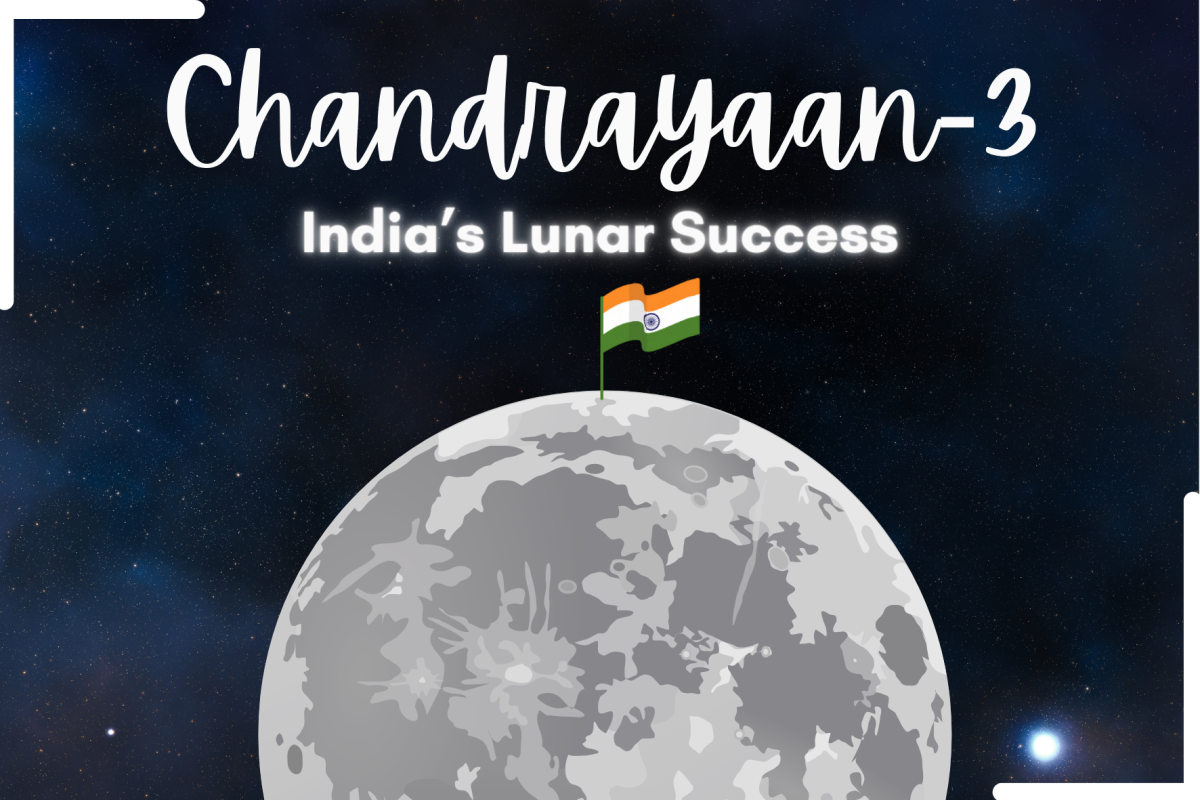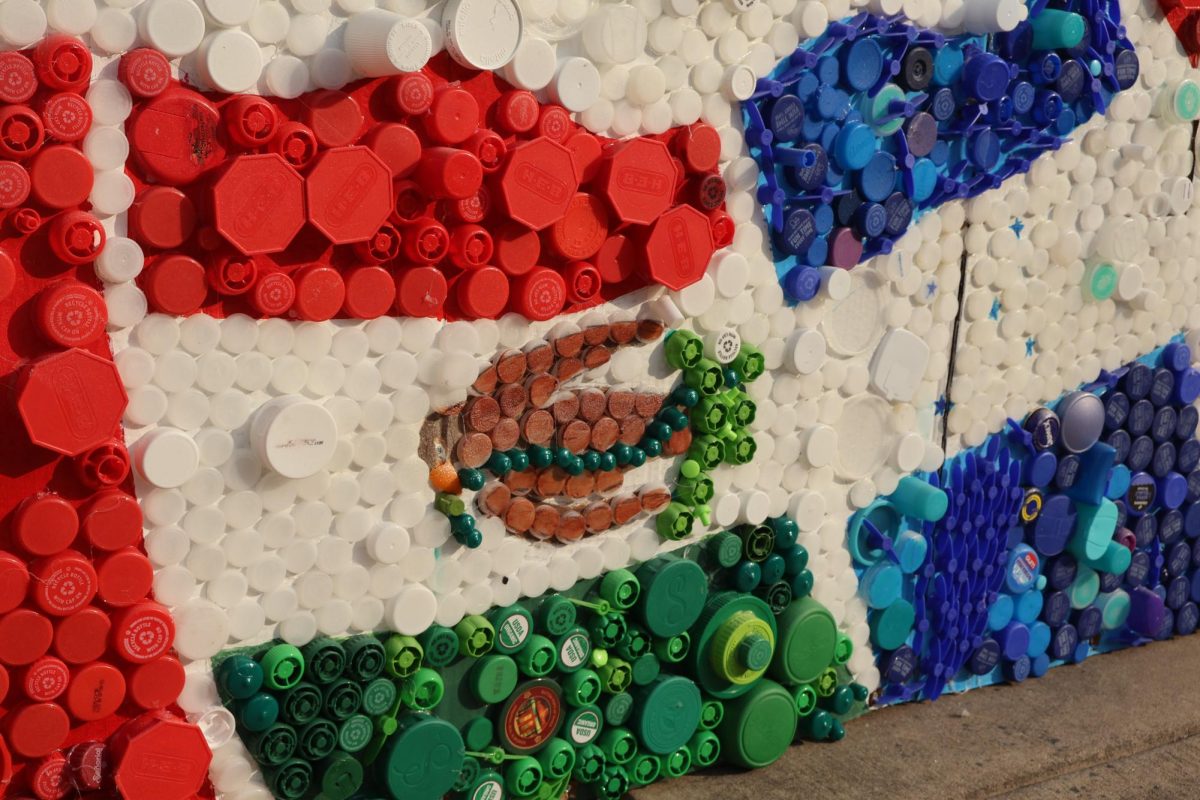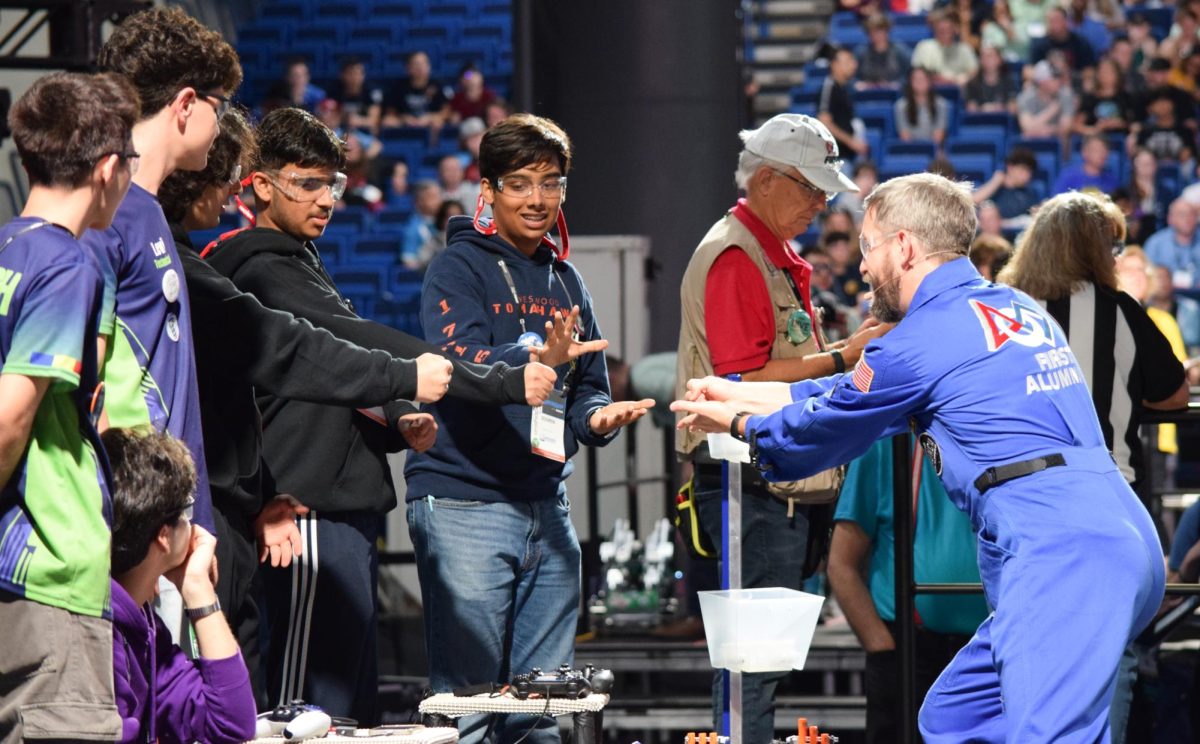Eyes all over the world shone with the light of a million stars on Aug. 23, 2023, mirroring the view that India’s Vikram lander of their Chandrayaan-3 mission saw as it fixed itself—and its country’s flag—upon the surface of the moon. Other than becoming the 4th country in the world to reach the moon’s surface, India has also officially placed 1st in the race to reach the south pole of the moon, setting the stage for cutting-edge thermal, seismic, mineralogical, and elemental lunar research.
Making their mark among the world’s strongest space powers, India’s space program has rapidly grown into one of the world’s top hubs for developing exploratory space technology. Marking a monumental milestone not only for global space exploration but for the country’s increase in potential for scientific advancement, high economic growth, and improved international cooperations, India saw billions of hands across the world raising up to a salute, united through a sense of national pride.
“I heard about the Chandrayaan-3 mission on the news the day that it happened,” Nishita Mukkara ‘26 said. “I remember being in school and hearing everyone talking about it. It felt like such a cool moment to be alive to witness something so historic.”
The south pole is located on the dark side of the moon, and is a particular point of interest for space exploration primarily due to the uncharted levels and characteristics of ice-water present in shadowed craters. In addition to adding exceedingly valuable research to the global space industry’s arsenal, higher knowledge of the existence of water and minerals on the moon will open efficient and accessible ways of providing resources to, for example, future crewed missions to the Earth’s most cherished satellite.
“The lunar south pole is [particularly] important to scientists because [of]…its unique geological features,” Director of Space Education Research Foundation (SERF), Ahmedabad and former ISRO scientist Professor Hari Om Vats said. “Lunar water could provide fuel, oxygen, and drinking water, making it a potential site for lunar mining and even future settlements.”
The Chandrayaan-3 mission essentially had two parts to its name, both in the memory of their counterparts in the Chandrayaan-2 mission that crashed upon the lunar surface on July 22, 2019. The first component of the Chandrayaan-3 mission is the Vikram lander, which is in charge of exploring the beginning-to-end capabilities of safe, soft landing on the moon. It is also equipped with high-tech sensors that will aid in the lander’s exploratory responsibilities. As for the second component, the Pragyan rover’s responsibilities encompass sending images of the moon’s environment, exploring the craters, and establishing certain research objectives.
The core goals of the Chandrayaan-3 mission include to demonstrate safe and soft landing, exhibit the rovering of the Pragyan rover, and most importantly, to conduct scientific experiments- at the height of which lies studying lunar quakes and seismic activity, ice-water on lunar surface, measuring thermal properties on the moon, mineral and elemental compositions of the surface and atmosphere, as well as studying gas and plasma in the environment and observing Earth from the moon. According to Professor Vats, he is particularly keen to learn about the research that will provide more definitive clues as to the formation of the moon. Mukkara, however, is wholly fascinated by the idea of water on lunar surfaces.
“Water is an essential element of life, [and] every living being needs it. If there were to be life on other planets, it could only exist if there was water,” Mukkara said. “Discovering water on the moon could [potentially] lead to the discovery of alien life. While just a possibility, it’s definitely something interesting to think about.”
India’s space history has been one, like many others of its category, brimmed with highs and lows of all kinds of multitudes. However, with Chandrayaan-3 as a well-deserved capstone of India’s desired lunar expeditions, many find it important to acknowledge the nation’s cosmic history leading up to it. Chandrayan-1 was India’s first attempt at a mission to the moon, and ended in success, with the satellite confirming the presence of ice-water on the lunar surface. Chandrayaan-2 however, was not as lucky with its outcome. Originally setting out to do what Chandrayaan-3 has now done, although Chandrayaan-2 successfully deployed their orbiter, their lander crashed upon the lunar surface.
“India has gone a long way from starting [the] building of the first Indian satellite, ‘Aryabhata’, in a [mere] industrial shade in 1975,” Professor Vats said. “Now with Mangalyaan (Mars mission), Chandryaan (Moon mission), and the Aditya L1 (Sun mission)… Indian space programs have [established] the highest success rate and are most cost-effective.”
Though Chandryaan-3 has no doubt bolstered India’s internal relations, boosted economy, and uplifted national pride, its role on behalf of India on the global scale is enormous. In the space industry, the successful mission has reinforced and even elevated India’s status among the higher space powers of the world. This will allow India as a nation to have a more equal say in all aspects of decision making and risk management internationally, giving foreign powers a newfound perspective towards India’s capabilities.
“[I believe] that with India, China, and Japan all advancing their space programs, it moves the skewed scale from a U.S.- and Europe-dominated industry,” community member Anil Nambiar said. “It’s good to see this new balance.”
After bringing about a temporary close to their large-scale lunar expeditions, India has now set their sights on the star of our solar system—the Sun. The launch of Aditya L1, a spacecraft dedicated to observing solar activities and their impact on space weather in real time, was launched on Sep. 2 by the Indian Space Research Organization (ISRO), siphoning off the rewarding energy of the Chandrayaan-3 by launching off the same pad of the Satish Dhawan Space Centre (SDSC).
“It’s clear that India is no longer falling behind in terms of space development. In just a few years, India has managed to climb to the forefront of science and technology,” Mukkara said. “[I believe] the eyes of the world pushed the country to soar to new heights, [and] hopefully, we’ll see it continue to soar into the future.”














